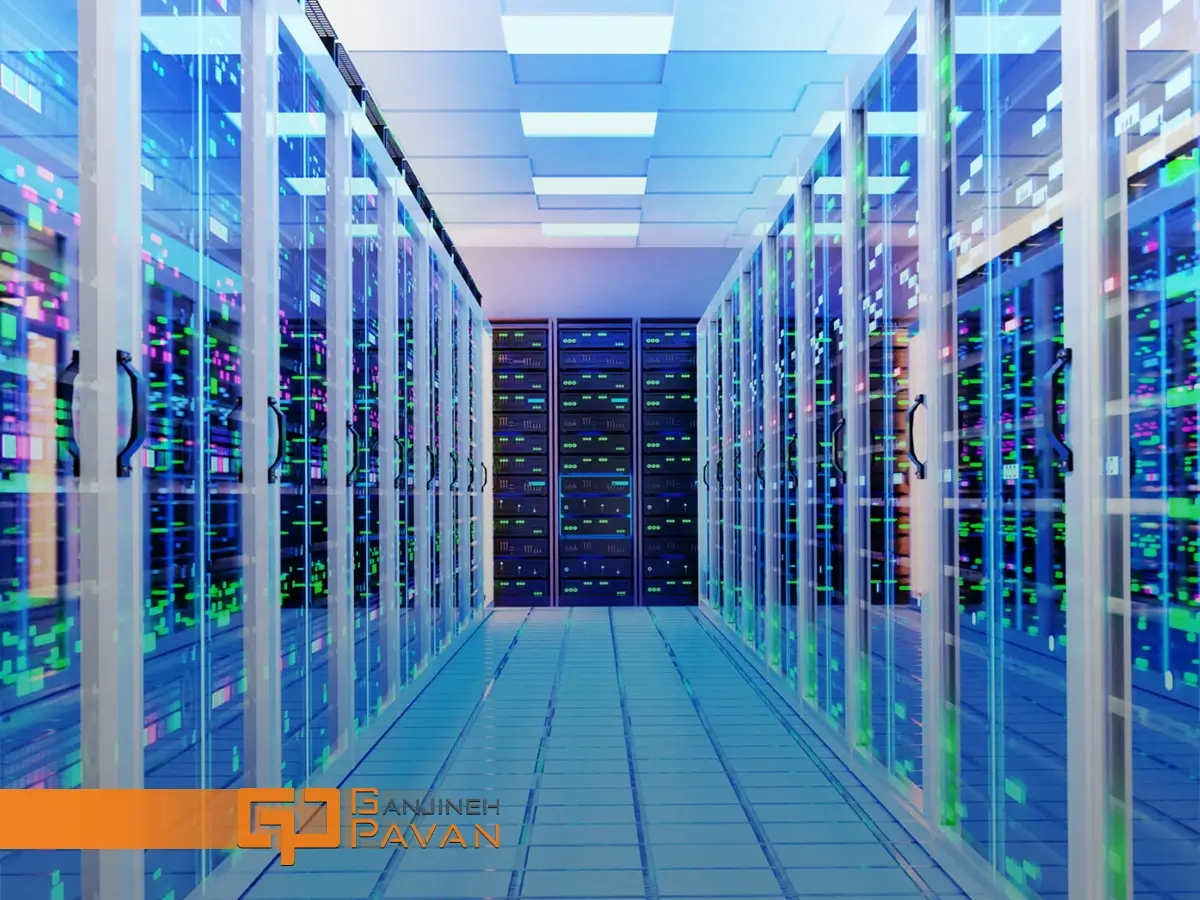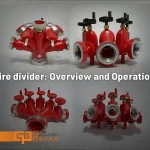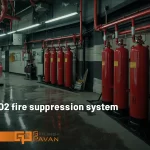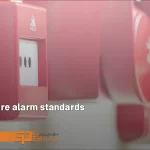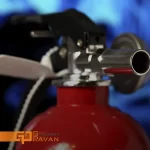In recent decades, data centers have emerged as the epicenter of global information operations and technology. As the volume of data continues to rise and technology advances, these centers have become pivotal hubs for storing and processing sensitive information. Amidst this digital landscape, safeguarding these invaluable assets has risen to the forefront as a fundamental priority. Among the essential tools in fortifying against fire hazards, the utilization of fire extinguishing equipment tailored to the unique needs of data centers stands out.
The significance of incorporating fire extinguishing equipment within data centers unfolds from dual perspectives. Firstly, the omnipresent threat of fire looms as a common and potential risk to these technological nerve centers. Secondly, the vulnerability and potential damage inflicted upon the delicate and invaluable hardware of data centers when ill-suited fire extinguishing equipment is employed underscore the critical nature of making informed and appropriate equipment choices.
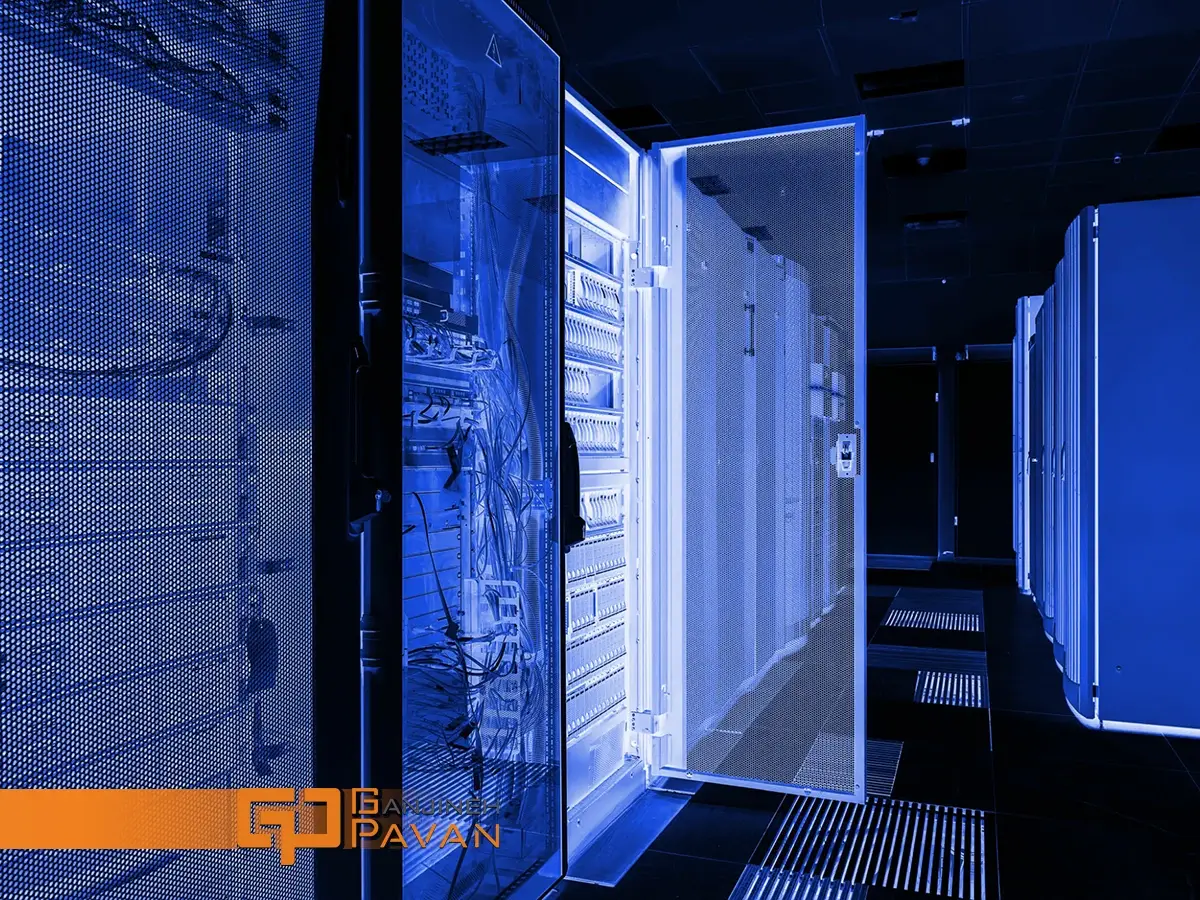
In this context, the selection of a fire extinguishing system tailored to the data center environment becomes imperative. Ranging from specialized equipment for server rooms to cutting-edge gas systems, these tools must be curated to ensure the ongoing protection of the data center’s safety while mitigating any potential collateral damage resulting from firefighting operations. This narrative delves into the paramount importance of this selection process, shedding light on the pivotal role that firefighting equipment plays in fortifying the resilience of data centers.
What is a server room or data center?
A server room or data center is a dedicated space used to house computer servers and other equipment that supports the operation of a network or data storage system. These facilities are designed to provide a secure and controlled environment to protect sensitive electronic data and equipment from damage or loss.
Server rooms and data centers usually have specialized infrastructure to support the needs of the equipment in them. This can include raised floors to provide space for cabling and cooling equipment, specialized air conditioning and ventilation systems to maintain constant temperature and humidity, and a backup power supply to ensure uninterrupted operation in the event of a power outage.
Equipment located in a server room or data center can include servers, storage devices, network switches, and other infrastructure components. These systems are usually connected to a larger network or Internet connection to provide access to data and services.
Server rooms and data centers are used by a wide variety of organizations, including businesses, governments, and educational institutions. They are essential for providing reliable and secure access to data and services and are critical components of a modern IT infrastructure.
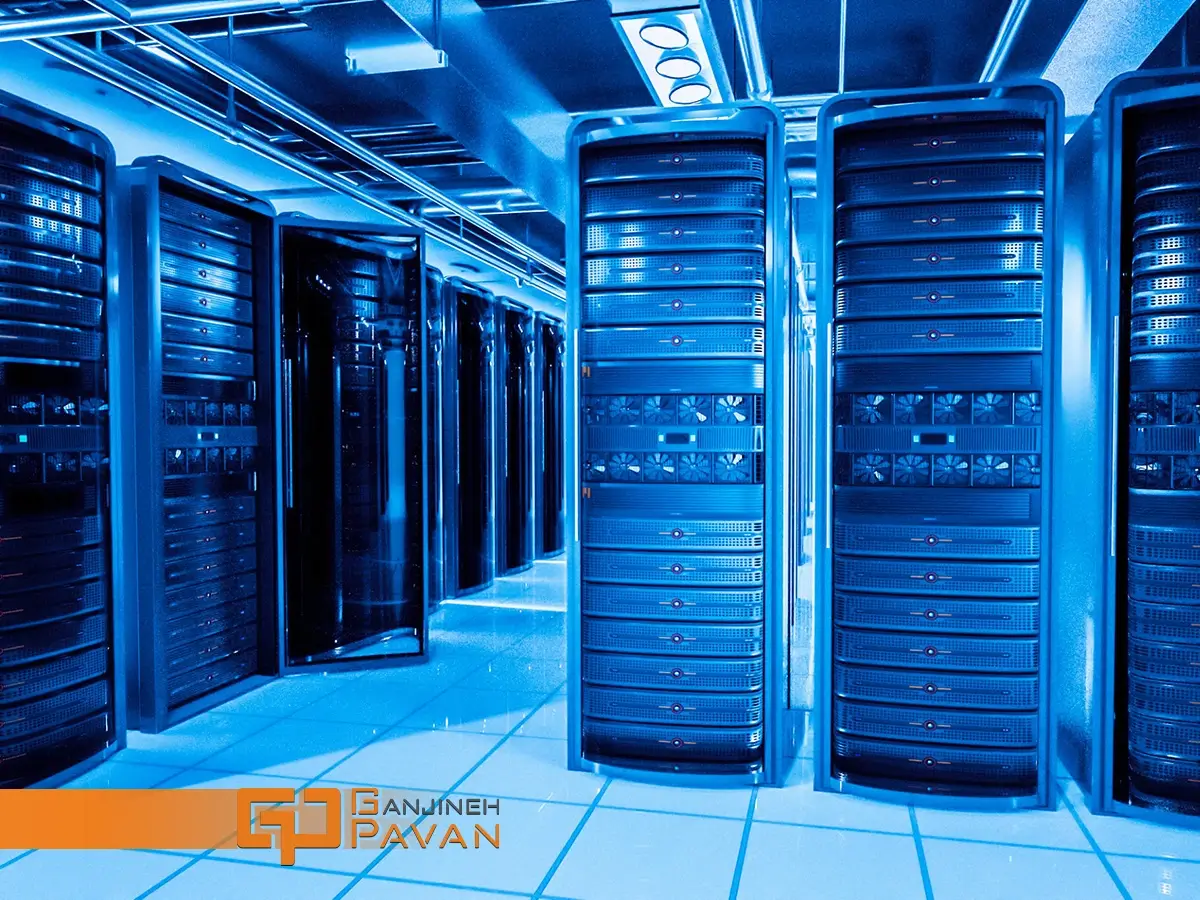
Fire hazards in server rooms
Servers are valuable and often essential to business, but that’s not the only reason to install a fire protection system for these buildings. These rooms contain special risks that require more care so that the fire does not only damage your valuable servers but also prevents it from spreading to other places and threatening more assets and lives.
Faulty wiring, overheating, overloading, or shorting can quickly cause a fire in rooms containing a lot of electrical equipment, such as a server room. Businesses need a solution that works quickly to put out fires properly without damaging servers. A trained fire safety technician will be able to help design a system that will reduce this risk and limit any risk of injury that may occur.
For consultation, design, installation, commissioning, and maintenance of the server room fire extinguishing system, please contact our experts in Ganjineh Pavan.
Common causes of fire in server rooms and data centers
Electrical failure of equipment: Overloading of outlets is a common and often overlooked problem. The same goes for short-circuiting electrical components such as switches or power inverters.
Overheating of electronics: Cooling systems may fail, or the room may not be adequately ventilated, resulting in components overheating to the point where ignition is inevitable.
Underfloor wiring problems: When the underfloor isn’t strong enough, underfloor wiring can become damaged, causing problems such as overheating or sparking.
Proximity Fires: Since server room walls often have many holes and conduits for cables to pass through to adjacent rooms and offices, they are more vulnerable to nearby fires. Once the fire reaches the server room, it quickly engulfs it and then becomes a dangerous source of deadly noxious gases.
Accumulation of dirt and dust: Cooling fans and other equipment parts easily attract dust, and when this dust collects, it insulates the components and causes them to overheat. It can lead to fire.
The necessity of designing a comprehensive fire protection system for server rooms and data centers
When determining fire protection measures for server rooms and data centers, the entire building and structural, technical, and organizational fire protection should be considered. Not only fire protection facilities such as escape routes but also other technologies such as air conditioning systems play a role. A comprehensive fire protection solution considers the following steps:
- Fire prevention
- fire detection
- fire extinguishing
Why can’t a regular fire extinguisher be used in the server room?
Fire extinguishers come in many different types, so it’s always important to know the type needed for any particular environment or application. While many common fires can be extinguished with water or foam extinguishers, these agents can actually be a serious hazard if used in the wrong situation.
Electrical fires and fires involving computers and sensitive electronic equipment can be especially problematic. Since these are examples of Class C fires (electrical fires), special extinguishers such as water extinguishers are not suitable at all and can actually make the fire and situation much more dangerous.
Traditional foam fire extinguishers can also cause irreparable damage to your servers, and using fire sprinklers on expensive computer equipment can cause serious damage to the equipment.
Water-based and foam-based fire extinguishers can conduct electrical current. Therefore, when dealing with a class C fire (electrical equipment), if using a fire extinguisher or an incorrect fire extinguishing system, it can cause the fire to develop instead of extinguishing it.
Additionally, if you are dealing with sensitive electronic equipment that is a valuable asset to your home or business, such as computers in a server room or data center, ABC dry chemical extinguishers are also not suitable. These types of extinguishers leave a residue. This residue causes server components and electronics to corrode and can be essentially more destructive than the original fire itself.
Given the above, if you want to protect sensitive electronic equipment in a server room or data center from fire damage, you need to consider the right extinguisher for the job.
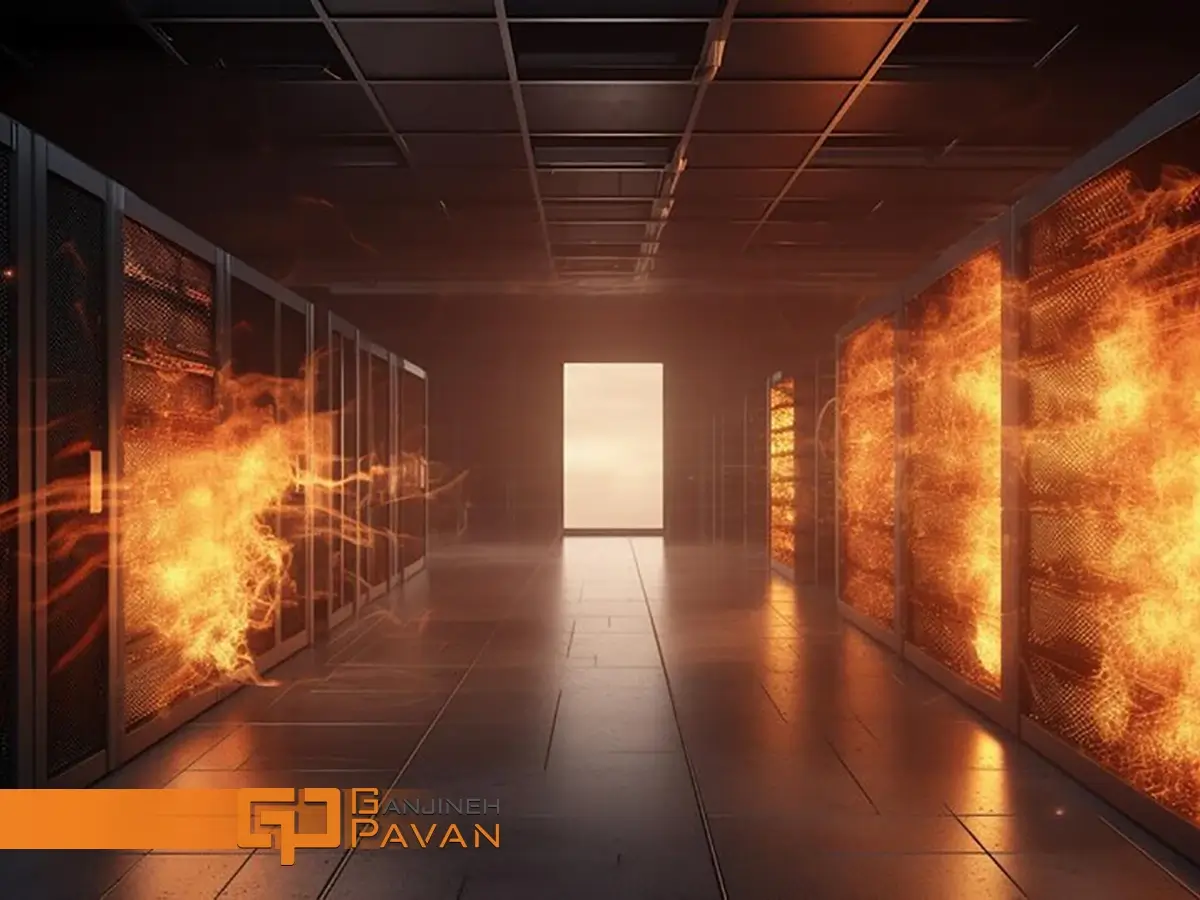
The most suitable fire suppression system for server rooms and data centers
Some extinguishers are specifically designed for Class C fires, making them safe and effective for both electrical fires and sensitive electronic equipment. These extinguishers are often called clean agent fire extinguishing systems. In the following, we introduce the most suitable fire extinguishing system for server rooms and data centers.
Extinguishers based on halocarbon
These systems are perhaps the ideal choice for server rooms and sensitive electronic and data equipment.
While these types of extinguishers can be used for both B and C classes and some even for A, they are suitable for use in electronic equipment because they do not leave a residue that can damage electronic components. Some common halocarbon-based extinguishers you may find in fire extinguishers include HCFC-123 (Halotron I) and FE-36 (CleanGuard).
HCFC-123 is a hydrochlorofluorocarbon gas extinguishing agent that is non-conductive, leaves no residue, and is even environmentally safe. This agent is effective for extinguishing fires because the cleaning agent chemically reacts with the ignition, fuel, and oxygen in the fire to disrupt the chain reaction between them.
FE-36 (HFC-236fa), used in Ansul CleanGuard fire extinguishers, is a hydrofluorocarbon extinguishing agent similar to HCFC-123 but without ODP (Ozone Depletion Potential). Either of these two clean agents would be a good choice in a server room fire extinguisher, as they are better for the environment than Halon 1211.
CO2 carbon dioxide extinguishers
CO2 fire extinguishers are another option for use on electrical fires involving sensitive and valuable electrical equipment. It can be used on both Class B and C fires, leaves no residue, is non-conductive, and is a non-polluting gas.
CO2 essentially suffocates the fire and removes oxygen from the area, thereby disrupting and extinguishing it. This type of silencer is sure to be safe for your electronic equipment.
Fm200 fire fighting system for server room and data centers
The FM-200 is a clean agent fire extinguishing system that uses gas to extinguish fires without leaving any residue or damaging electronic equipment. It is safe for use around sensitive electronic equipment and is effective in quickly suppressing fires, which can help minimize damage to equipment and data stored in the server room.
FM-200 systems are also environmentally friendly, as this gas does not deplete the ozone layer and has a low global warming potential. Additionally, FM-200 systems are easy to install and maintain, making them a popular choice for server rooms, data centers, and other sensitive electronic environments.

Inert gas extinguishing systems
Once activated, inert gas fire suppression systems lower the oxygen level in the room to the point where the fire is extinguished but is safe for you and your employees.
Commonly used inert gases for server rooms or data centers are IG-55 (Argonite®). IG-55 is an inert gas of argon and nitrogen that occurs naturally in the environment. With ODP of zero ozone depletion potential, GWP of zero global warming potential, and zero atmospheric lifetime, it has excellent environmental properties. A typical design concentration of 40% will reduce the oxygen level to 12.5% within 60 seconds.
Another gas is IG-541 (Inergen®). IG-541 is a mixture of 52% nitrogen, 40% argon, and 8% CO2. However, in the event of a fire, when IG-541 is discharged, it mixes with the air in the room to form a mixture of 67.3% nitrogen, 12.5% oxygen, 17% argon, and 3.2% carbon dioxide. Like IG-55, the mixture of gases will reduce oxygen levels and extinguish the fire, making it safe for people inside the room.
Contact Ganjineh Pavan experts for consultation, design, and installation of server room fire extinguishing system
Your servers are an expensive and critical part of your business operation. Their value, plus the risk of electrical fires, makes server rooms and data centers a key location that must be considered in the development of any fire and life safety system.
Fire protection is not just about compliance. It’s about protecting businesses and people as well as what they do to ensure you can avoid potential risks and be successful in the future. Working with a fire protection professional experienced in the specific hazards you face is essential to being prepared.
References:

